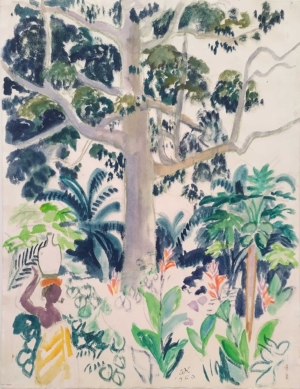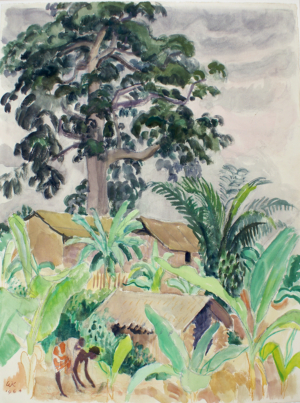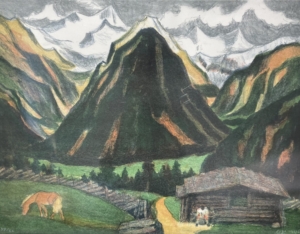Wilhelm KAUFMANN was born in Salzburg in 1901. He studied at the Academy of Fine Arts in Vienna from 1919 to 1923. In 1923 he became a pupil of Anton Faistauer and worked on his frescoes in the Morzger parish church near Salzburg. Study trips to Belgium, France and England followed. In 1926 he worked with Anton Kolig and Robin Christian Andersen on the tapestries for the Salzburg Festival Theater. In 1935, the artist was represented with four landscape paintings in the Austrian pavilion at the “Exposition universelle & international de Bruxelles”. In 1937, Kaufmann was commissioned to paint a landscape fresco in the Salzburg Festspielhaus, which was destroyed during reconstruction work during the Hitler regime in 1939. From 1952 to 1958, Kaufmann lived and worked as an art teacher and freelance painter in Pennsylvania (USA) and Canada. In 1963, he traveled for five months to visit Albert Schweitzer in Lambaréné, Africa. In the years that followed, the artist focused on the original lifestyles and ways of life of primitive peoples. The central theme in his works was always the search for harmony between nature and man. Wilhelm Kaufmann, who worked in his studio in the Salzburg Künstlerhaus until old age, died in Salzburg in 1999. 1995 — first exhibition at the Welz Gallery.
Wilhelm KAUFMANN was born in Salzburg in 1901. He studied at the Academy of Fine Arts in Vienna from 1919 to 1923. In 1923 he became a pupil of Anton Faistauer and worked on his frescoes in the Morzger parish church near Salzburg. Study trips to Belgium, France and England followed. In 1926 he worked with Anton Kolig and Robin Christian Andersen on the tapestries for the Salzburg Festival Theater. In 1935, the artist was represented with four landscape paintings in the Austrian pavilion at the “Exposition universelle & international de Bruxelles”. In 1937, Kaufmann was commissioned to paint a landscape fresco in the Salzburg Festspielhaus, which was destroyed during reconstruction work during the Hitler regime in 1939. From 1952 to 1958, Kaufmann lived and worked as an art teacher and freelance painter in Pennsylvania (USA) and Canada. In 1963, he traveled for five months to visit Albert Schweitzer in Lambaréné, Africa. In the years that followed, the artist focused on the original lifestyles and ways of life of primitive peoples. The central theme in his works was always the search for harmony between nature and man. Wilhelm Kaufmann, who worked in his studio in the Salzburg Künstlerhaus until old age, died in Salzburg in 1999. 1995 — first exhibition at the Welz Gallery.






Recent Comments